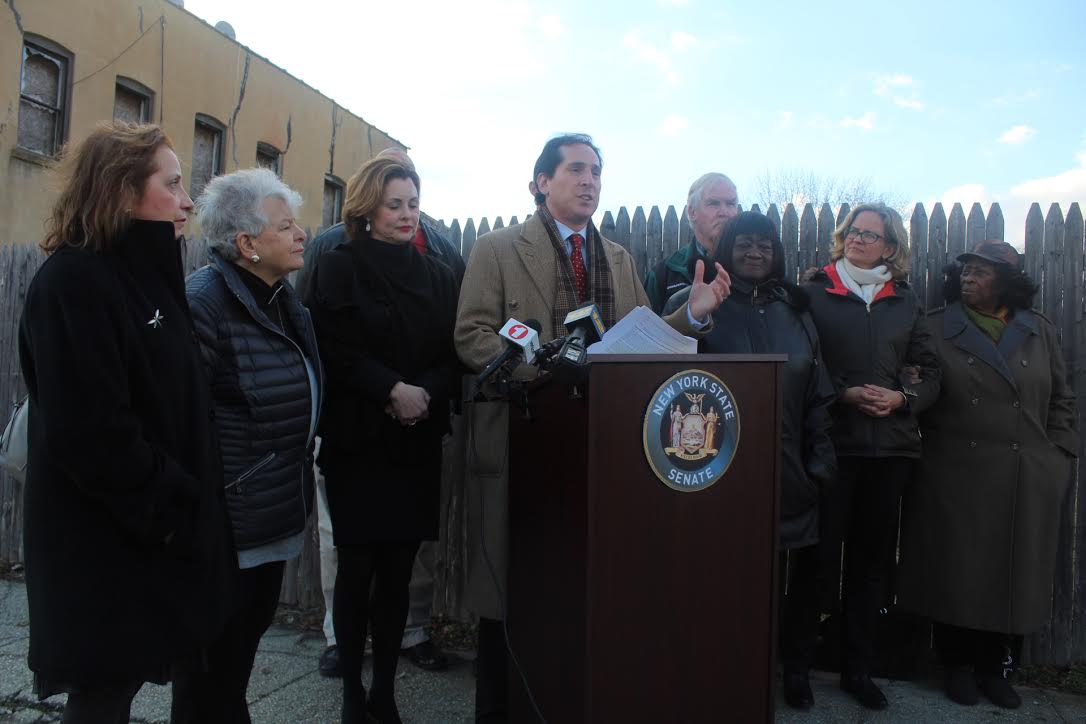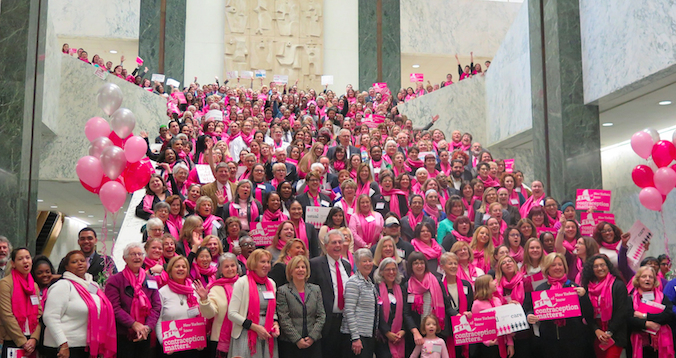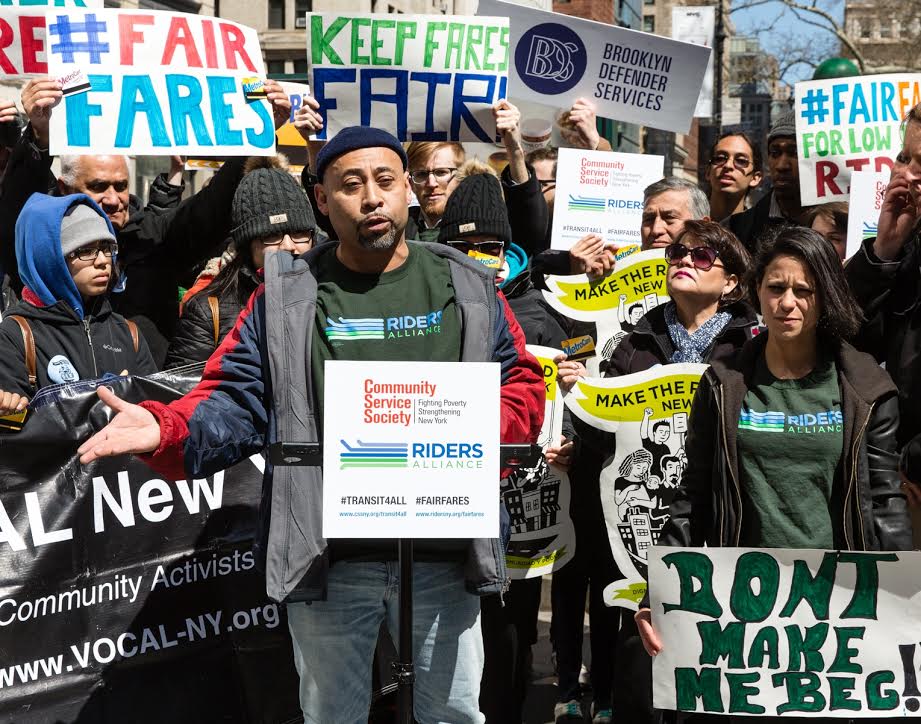Immediate Steps We Must Take to Protect Our Drinking Water, and Ourselves

State Senator Todd Kaminsky, the author
New York State is facing a drinking water crisis and we cannot waste another moment in aggressively and adequately addressing it.
Close to home for me, recent reports that the Environmental Protection Agency discovered a dangerous chemical — 1,4-Dioxane — that is more prevalent in our drinking water here on Long Island than anywhere else in our state raise serious questions about our health and safety that must be immediately addressed.
Dioxane is a hazardous agent often used as a stabilizer for manufacturing solvents, and is present in many shampoos, lotions and detergents. Worse, it readily leaches from soil to groundwater, is resistant to biodegradation, and cannot be removed from water with conventional treatment technologies. An EPA report concluded that this toxin is “likely to be carcinogenic to humans" by all routes of exposure.
Whether it is Dioxane, other chemicals, lead, or bad infrastructure, all over the state we have water quality problems that require our immediate attention.
The time to act is now. All public institutions put in place to protect New Yorkers must marshal their resources to ensure we quickly learn the extent of this problem, create a plan to address it, and act swiftly to clean our drinking water however necessary, wherever necessary.
Let’s start today. Here’s how:
Pass legislation I put forth to direct the state’s health commissioner to immediately conduct a comprehensive health review of 1,4-Dioxane in our water and set a specific limit for this dangerous chemical. Currently, there is no specific standard for the amount of 1,4-Dioxane allowed in our water, which means it automatically defaults to a catch-all standard, which is way too high.
Develop technology to remove 1,4-Dioxane from our water. There is a pilot program underway in Suffolk County to do just that, which must be expedited and expanded.
Approve Gov. Andrew Cuomo’s proposal to invest $2 billion in critical clean water infrastructure across New York. Water treatment can cost nearly $1 million to rid each contaminated site of 1,4-Dioxane -- a bill local municipalities simply cannot afford to foot. The new funding stream would go a long way toward supporting the chemical-removing technology that we need.
Water is our most critical natural resource, and Long Island relies heavily on its aquifer system to provide a clean and plentiful supply of potable water for our consumption. When we find out that the water we take for granted every day contains chemicals that can cause cancer, we must act without hesitation.
I will fight tirelessly and work with my colleagues from both sides of the aisle to procure the necessary funding for the surveying, planning, and technology to purge our water of harmful substances and restore it to the clean and safe state we deserve. For all of the taxes we pay, we Long Islanders deserve the most basic service a government can provide: clean and safe drinking water. It’s a necessity of daily life that all New Yorkers deserve.
***
Todd Kaminsky is the state Senator for New York’s 9th Senatorial District and was recently appointed to serve as the Ranking Member of the Senate Environmental Conservation Committee. On Twitter @ToddKaminsky.
***
Have an op-ed idea or submission for Gotham Gazette? Email This email address is being protected from spambots. You need JavaScript enabled to view it.
Planned Parenthood’s Message for Albany, To Be Delivered in Person

Planned Parenthood NYC
Many of us have been involved in national actions like participating in the Women’s March on Washington, but now more than ever, it’s just as important to take action at our state and local level. On Monday, January 30, dozens of Planned Parenthood of New York City supporters, volunteers, and staff are getting on a bus to Albany to demand that our elected officials protect New Yorkers’ access to health care.
In the midst of the worst assault on reproductive rights that we’ve ever seen, we need leaders that will stand up for reproductive health and rights. There are local steps that must be taken. Recently, in response to the demands of New Yorkers, Governor Andrew Cuomo announced bold action to enhance access to affordable contraception through insurance coverage.
While this is a great step forward, it’s also only the beginning. Right now, our State Senate majority is hostile to sexual and reproductive health issues, and has failed to enact crucial legislation that would protect New Yorkers’ access to care. Now more than ever, our elected officials must move to ensure that reproductive health is protected.
Here’s what we’ll be pushing for on Monday in the capital:
Protecting Planned Parenthood & Ensuring Continued Funding
Under the current federal administration, we are facing threats to funding for Medicaid and Title X, programs that we rely on to provide essential health care to thousands of New Yorkers each year. Losing funding would have a devastating impact on the communities we serve, particularly for women of color and low-income women. In 2017, we are demanding that our state’s elected officials stand with Planned Parenthood and reject any attempts at the federal or state level to restrict access to reproductive health care.
Ensuring Access to Abortion through the RHA
New York State legalized abortion in 1970, three years before the Roe v. Wade decision. But with Roe now at risk, New York must take additional steps to make sure that abortion access is protected. We must update three key components of our current law: first, the Constitutional protections of Roe v. Wade must be written into New York state law. Second, we must remove restrictions that criminalize abortion providers. And, finally, our law must reflect modern medical practice by allowing Advanced Practice Clinicians to provide abortion care. The Reproductive Health Act (RHA) accomplishes all these goals and should become law during this session.
Improving Contraceptive Access
The federal Affordable Care Act (ACA) made contraception more accessible than ever, but New Yorkers still face barriers in accessing the contraception they need. The Comprehensive Contraceptive Coverage Act (CCCA) ensures commonsense solutions so New Yorkers have the tools they need to lead healthy lives and fulfill their dreams. The CCCA removes out-of-pocket expenses for vasectomies and improves New Yorkers’ ability to access Emergency Contraception in a timely manner, in addition to provisions similar to those the governor has put forward.
At PPNYC alone, 64,000 New Yorkers rely on us annually for health care services. Our communities come to us for indispensable primary and preventive care, including contraception, breast and cervical cancer screening, pregnancy testing, STD testing and treatment, HIV testing, and more. And regardless of insurance status, immigration status, or ability to pay, we’re here for all people—no matter what. Time and time again, we have heard from patients and activists about the importance of being able to access affordable, high-quality care. Now is the time for New York elected officials to step up and protect access to health care, not just in New York City, but across all affiliates statewide.
The assault on reproductive rights will only intensify around the country, and New York has the unique responsibility to stay true to its progressive legacy. Now is the time to be a model for resistance. Now is the time for our elected officials to stand up for reproductive health and rights, and send a message that will resonate around the country: we won’t go back.
***
Joan Malin is President and CEO of Planned Parenthood NYC. On Twitter @PPNYCAction.
***
Have an op-ed idea or submission for Gotham Gazette? Email This email address is being protected from spambots. You need JavaScript enabled to view it.
When A Subway Swipe is Out of Reach

(photo: Riders Alliance)
Not long ago, as I entered the 149th Street and Grand Concourse station in the Bronx where I live, I saw a group of undercover police officers surrounding a young man under arrest for jumping the turnstile. As I stared, I remembered my own run-in with the cops for fare evasion. Seeing this kid get arrested, my mind returned to that moment: the cold metal of the grate against the back of my head, the suffocation of the officer's forearm deep in my chest, and my fear that my attempt to spare my mother’s health—however well-intentioned—might put my own well-being at risk.
Let me explain.
When I was in 7th grade I was accepted into Prep for Prep, a summer program that provides academic and leadership development opportunities for low-income kids of color. At 14 years old, I wanted nothing more than to sit around and hang out with my friends. But my mother understood the importance of this opportunity for a low-income black kid from the Bronx and insisted that I not let this pass me by. At her urging, I attended classes on weeknights and weekends in Midtown.
The program provided two-trip MetroCards, but because of bus transfers, they weren’t enough to get me there. To help out, my mother, who has multiple medical conditions that require her to take life-saving pills every day, would use savings dedicated to her medical bills to buy me a MetroCard.
It hurt me to see my mother make that sacrifice. No parent should ever have to choose between their health and a MetroCard for themselves or their family. But a lot of people make exactly these kinds of near-impossible choices every day to pay for their travel. In fact, a study by the Community Service Society of New York (CSS) found that one in four low-income New Yorkers reported being unable to travel to doctor appointments, jobs, and other necessities because of the cost of a MetroCard. The same report found that the cost of a 30-day unlimited MetroCard often makes up over 10 percent of a family's budget, forcing individuals to make painful sacrifices, including on essentials like rent, food, and other bills.
I saw my mother struggle with that decision every day—until the day when I decided I couldn’t stand to be the reason anymore. I lied and told my mother that I already had the fare to get to the program—and jumped the turnstile. I wanted to give my mom a break. I wanted to help her out for once after all that she had done for me.
Of course I was stopped by the cops. After a terrifying encounter, they let me off with a warning—but we all know that I was an exception to the rule.
James Baldwin once wrote in an article for Esquire Magazine, “Anyone who has ever struggled with poverty knows how extremely expensive it is to be poor.” This is certainly true in New York City, where, as CSS found, 58% of low-income riders rely on the transit system—but are all too often unable to afford to use it. This is the inescapable trap of poverty: the poor pay more for everything.
This is true of transit as well: we pay more for a single-ride MetroCard because the fare structure incentivizes buying unlimited monthly MetroCards. Those who can’t afford to shell out a lump sum of $116 (and rising) are paying more than the wealthier for their trip. We pay more because we don’t make enough to take advantage of the pre-tax transit benefits program middle-income and wealthy New Yorkers enjoy. And we pay more when we get caught begging for a swipe or jumping the turnstile -- we get fined hundreds of dollars, get carted off to jail, or worse.
Like my neighbors, I know all too well how poverty forces people to make tough, sometimes illegal, choices simply to get around. Unlike my neighbors, every fall I have a temporary escape from poverty. In no small part because of the opportunities that Prep for Prep provided, I’m a junior at Harvard University. College isn’t just a place to earn a better life for myself in the future; it’s also a reprieve from the chronic trauma of poverty and the exhaustion that comes from having to calculate the cost of every action.
That’s why I’m joining CSS and the Riders Alliance in the call for #FairFares and asking Mayor de Blasio and our City Council to fund half-priced MetroCards for low-income New Yorkers.
Public transit should connect every New Yorker to good jobs, affordable housing, and the rich cultural opportunities that this city allows young and eager minds like me. Hundreds of thousands of New Yorkers are left out of those opportunities—but we can change that if we make public transit truly accessible to every member of the public, including the poor.
If my mom hadn’t sacrificed for me, I wouldn’t be where I am today—but the point is that no one should have to make the kinds of sacrifices my mom made to help their kids succeed. With Fair Fares, 800,000 more New Yorkers could be eligible for half-priced MetroCards that could save them up to $700 a year. Imagine how many parents could help their kids thrive with these savings if the Mayor would stand up for every New Yorker’s right to access public transit?
***
Robert Rush is a junior at Harvard University. He grew up in the Bronx and is a member of the Riders Alliance, a grassroots non-profit that fights for better, more affordable public transportation in New York City.
***
Have an op-ed idea or submission for Gotham Gazette? Email This email address is being protected from spambots. You need JavaScript enabled to view it.




